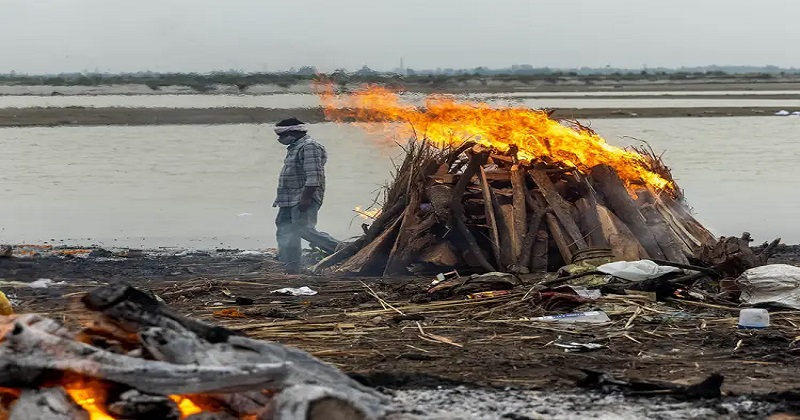
When India was dealing with the fatal second wave of Covid-19 in April of last year, photographs of bodies strewn across the Ganga riverbed in the northern state of Uttar Pradesh became a symbol of the country’s ‘underreporting’ of coronavirus mortality.
Several media sources, including international news agencies, claimed that the remains were ‘dumped’ because the cremetoria and graveyards were overcrowded, and the relatives opted to ‘abandon’ them on the sand of river banks. However, the return of remains this year in the Ganga river, which is considered sacred by the Hindu faith, has disputed the assertion of unrecorded fatalities. This comes after India recorded less than 3000 daily cases in recent weeks.
People continue to flock to Ganga for their loved ones’ ‘salvation,’ and the remains are being buried. Some believe it’s a custom, while others say it’s because of ‘budget constraints’. Despite the ban, the deceased are still buried because people think the Ganga will take them when it reaches its full length. The world media appears to have ignored the open burial of dead near the Ganga’s banks, instead of relating it to the covid fatalities.
It’s worth noting that the foreign press has chosen not to cover the open burial of the deceased along the river’s side this year. This year, India has seen a significant decrease in COVID-19 infections, with high vaccine coverage playing a significant role in the country’s effectiveness in combating the epidemic. People from many areas of Uttar Pradesh may be found on the banks of the Ganga.
‘In Hinduism, the funeral is performed by burning a large pyre made of wood. The body is absorbed in the Ganga at this point. There’s nothing wrong with all of this’, said Teerthraj Patel, a local who was in the ghat for a burial of a relative. ‘ People from diverse districts utilize the ghat. They are aware of the Ganga’s constriction throughout the summer season. They know that when the river expands during the rainy season, the bodies will be submerged and their loved ones will be saved. This is why there is temporary sand burial ‘, he continued.
Another local person present on the ghat stated that the bodies will eventually end up in the Ganga river. ‘During the summer, the Ganga narrows. When the water level rises, the bodies are absorbed into the Ganga’s flow, which, according to beliefs, aids in the attainment of moksha. Burying the dead in the sand is straightforward and inexpensive. As a result, individuals from many areas come here to bury the remains while observing traditional customs’, he stated.
The ban on burying dead bodies on the ghats appears to have had little effect, since people continue to visit the ghats. In the meantime, Prayagraj Municipal Commissioner Ravi Ranjan declared that an electric cremation will be built at the ghat in the near future.

Post Your Comments